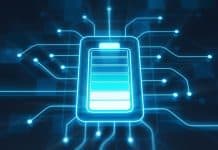
Apple has today posted a letter on its website and a technical article in its Knowledge Base apologizing for not being more transparent about how it handles performance on iPhones with older batteries. Last week, Apple issued a statement that made it clear that changes it made a year ago were indeed slowing down the maximum performance of iPhones with older batteries.
It will now also offer a battery replacement for older devices affected for a reduced $29.
“We’ve been hearing feedback from our customers about the way we handle performance for iPhones with older batteries and how we have communicated that process,” the letter reads. “We know that some of you feel Apple has let you down. We apologize. There’s been a lot of misunderstanding about this issue, so we would like to clarify and let you know about some changes we’re making.”
Apple is now apologizing for not being clearer about how the changes it made to eliminate sudden shutdowns of iPhones would affect iPhone performance. When I published my piece on this last week, even though I clearly, and forcefully, noted that Apple must be more transparent with its users on this issue, readers were incensed over the fact that a long-held conspiracy theory appeared to be confirmed. Apple was slowing down old iPhones and the reason didn’t matter. It is clear that some people will still feel that the reason Apple is giving here is not enough, which is understandable given the intense passion people have for their phones and how much they use them.
Interestingly, Apple says that it has attributed feedback about iPhone slowness to the process of updating to a new operating system and some bugs that were evidently present in iOS 11 that caused slowdowns.
“Over the course of this fall, we began to receive feedback from some users who were seeing slower performance in certain situations,” Apple says. “Based on our experience, we initially thought this was due to a combination of two factors: a normal, temporary performance impact when upgrading the operating system as iPhone installs new software and updates apps, and minor bugs in the initial release which have since been fixed.”
Apple says that it now believes, in addition to these other factors, that slower older iPhones are also being negatively affected by aged batteries which trigger their power smoothing.
“We now believe that another contributor to these user experiences is the continued chemical aging of the batteries in older iPhone 6 and iPhone 6s devices, many of which are still running on their original batteries.”
A year’s worth of issues with no reason given from Apple on this also makes it difficult for the company to re-build trust with its users. It’s much easier to be as transparent as possible up front about complex technical fixes than it is to try to explain the adverse effects of those fixes later. That’s a consequence Apple will have to live with.
And they were right, as I noted, that Apple should have been very direct and forthcoming with them as a consumer — person to person, so to speak. The effects of the shutdown fix were not explained fully to the press or the customer.
Apple is doing three things in response to customers concerned that older batteries are making their iPhone run slower.
Apple is reducing the price of an out-of-warranty iPhone battery replacement by $50 — from $79 to $29 — for anyone with an iPhone 6 or later whose battery needs to be replaced, starting in late January and available worldwide through December 2018. Details will be provided soon on apple.com.
Early in 2018, we will issue an iOS software update with new features that give users more visibility into the health of their iPhone’s battery, so they can see for themselves if its condition is affecting performance.
As always, our team is working on ways to make the user experience even better, including improving how we manage performance and avoid unexpected shutdowns as batteries age.
The letter explains that Apple will be adding ‘visibility’ in the the health of their iPhone’s battery, a fix I suggested in my original article. Though it is not specific about what that visibility will mean. An age indicator? A notification of some sort, like this mockup we made last week, that tells you when the ‘smoothing’ kicks in?
We don’t know yet. But I’d assume we’ll see it in testing in early January.
Apple will also lower the cost of battery replacements to $29 for anyone with an iPhone 6 or later beginning in January. I don’t know if this battery replacement policy will be quite enough, I’d imagine that it would depend on the success or failure of the various class action lawsuits that has sprung up in the week since the original revelation. I think a free replacement might be an option, especially for older devices.
But I’d love to see this be permanently implemented as an ongoing policy for all iPhones. I don’t know what Apple’s margins are on this but given that independent facilities often charge this I’d assume that it can swing this amount with official replacement parts. This could extend the life of iPhones and mitigate a lot of the complaints about battery replacement costs that cause people to call for user replaceable batteries.
Apple’s position on the performance issues, as outlined in the letter, is that it felt that limiting the peak performance of iPhones and spreading out processor load over time was worth preventing iPhones from shutting down suddenly.
“About a year ago in iOS 10.2.1, we delivered a software update that improves power management during peak workloads to avoid unexpected shutdowns on iPhone 6, iPhone 6 Plus, iPhone 6s, iPhone 6s Plus, and iPhone SE,” reads the letter. “With the update, iOS dynamically manages the maximum performance of some system components when needed to prevent a shutdown. While these changes may go unnoticed, in some cases users may experience longer launch times for apps and other reductions in performance.”
Apple says that this had the intended effect, reducing the amount of times that older iPhones suddenly shut off. Nonetheless, there has been some criticism regarding the way Apple handles aging lithium-ion batteries, the shortcomings of which are very well known in engineering circles.
Indeed, Apple is now reportedly working on its own power management controllers for iPhone, perhaps to have a better handle on how CPU and battery components work together. Apple notes that iPhones return to full performance once the batteries are replaced.
Apple’s Knowledge Base article goes deeper into both the expected behaviors of lithium-ion batteries and what, exactly, is and is not affected by the shutdown fix that came with iOS 10.2.
A TL;DR and a little meta commentary here: Apple will soon warn you when your battery is so old it starts affecting performance. It will not change the behavior that smooths out power curves and slows down iPhones with older batteries because this would cause them to shut down and it believes it’s the right thing to do. Battery replacements for these phones will cost a reduced $29 temporarily, though I think there’s a strong argument to make this the permanent price. The reasons Apple gives here and its response are reasonable, but it will take a reputational beating over this and has lost an amount of user trust that it will have to regain.
Here is the full letter:
December 28, 2017
A Message to Our Customers about iPhone Batteries and Performance
We’ve been hearing feedback from our customers about the way we handle performance for iPhones with older batteries and how we have communicated that process. We know that some of you feel Apple has let you down. We apologize. There’s been a lot of misunderstanding about this issue, so we would like to clarify and let you know about some changes we’re making.
First and foremost, we have never — and would never — do anything to intentionally shorten the life of any Apple product, or degrade the user experience to drive customer upgrades. Our goal has always been to create products that our customers love, and making iPhones last as long as possible is an important part of that.
How batteries age
All rechargeable batteries are consumable components that become less effective as they chemically age and their ability to hold a charge diminishes. Time and the number of times a battery has been charged are not the only factors in this chemical aging process.
Device use also affects the performance of a battery over its lifespan. For example, leaving or charging a battery in a hot environment can cause a battery to age faster. These are characteristics of battery chemistry, common to lithium-ion batteries across the industry.
A chemically aged battery also becomes less capable of delivering peak energy loads, especially in a low state of charge, which may result in a device unexpectedly shutting itself down in some situations.
To help customers learn more about iPhone’s rechargeable battery and the factors affecting its performance, we’ve posted a new support article, iPhone Battery and Performance.
It should go without saying that we think sudden, unexpected shutdowns are unacceptable. We don’t want any of our users to lose a call, miss taking a picture or have any other part of their iPhone experience interrupted if we can avoid it.
Preventing unexpected shutdowns
About a year ago in iOS 10.2.1, we delivered a software update that improves power management during peak workloads to avoid unexpected shutdowns on iPhone 6, iPhone 6 Plus, iPhone 6s, iPhone 6s Plus, and iPhone SE. With the update, iOS dynamically manages the maximum performance of some system components when needed to prevent a shutdown. While these changes may go unnoticed, in some cases users may experience longer launch times for apps and other reductions in performance.
Customer response to iOS 10.2.1 was positive, as it successfully reduced the occurrence of unexpected shutdowns. We recently extended the same support for iPhone 7 and iPhone 7 Plus in iOS 11.2.
Of course, when a chemically aged battery is replaced with a new one, iPhone performance returns to normal when operated in standard conditions.
Recent user feedback
Over the course of this fall, we began to receive feedback from some users who were seeing slower performance in certain situations. Based on our experience, we initially thought this was due to a combination of two factors: a normal, temporary performance impact when upgrading the operating system as iPhone installs new software and updates apps, and minor bugs in the initial release which have since been fixed.
We now believe that another contributor to these user experiences is the continued chemical aging of the batteries in older iPhone 6 and iPhone 6s devices, many of which are still running on their original batteries.
Addressing customer concerns
We’ve always wanted our customers to be able to use their iPhones as long as possible. We’re proud that Apple products are known for their durability, and for holding their value longer than our competitors’ devices.
To address our customers’ concerns, to recognize their loyalty and to regain the trust of anyone who may have doubted Apple’s intentions, we’ve decided to take the following steps:
- Apple is reducing the price of an out-of-warranty iPhone battery replacement by $50 — from $79 to $29 — for anyone with an iPhone 6 or later whose battery needs to be replaced, starting in late January and available worldwide through December 2018. Details will be provided soon on apple.com.
- Early in 2018, we will issue an iOS software update with new features that give users more visibility into the health of their iPhone’s battery, so they can see for themselves if its condition is affecting performance.
As always, our team is working on ways to make the user experience even better, including improving how we manage performance and avoid unexpected shutdowns as batteries age.
At Apple, our customers’ trust means everything to us. We will never stop working to earn and maintain it. We are able to do the work we love only because of your faith and support — and we will never forget that or take it for granted.
The Knowledge Base article on iPhone battery performance is here.
























